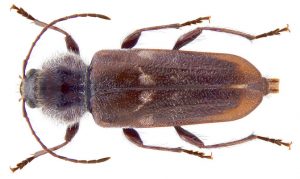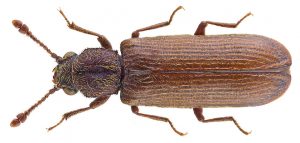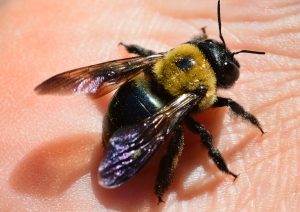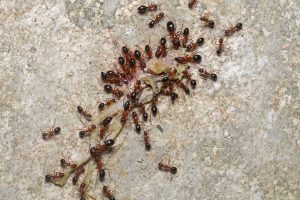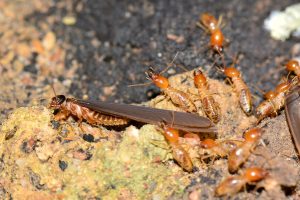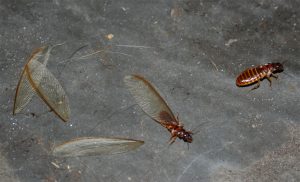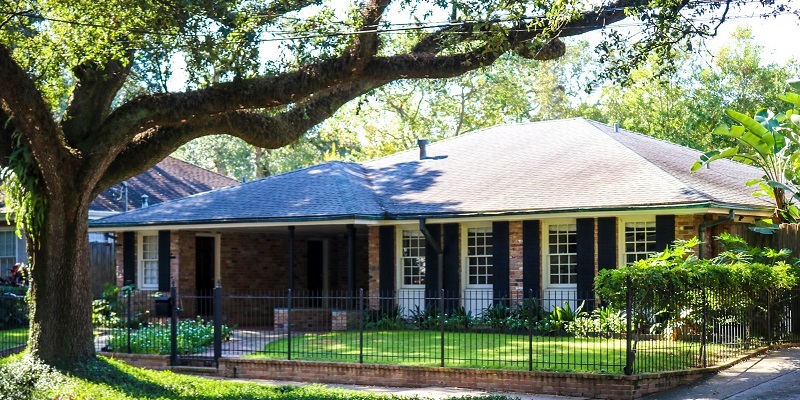
The “Wood-Destroying Insect Inspection Report” (WDIR) is a result of the inspection typically provided by a local registered pest control company. This inspection is sometimes erroneously referred to as a termite inspection, but six species of wood-destroying insects common to the area are considered.
For first-time homebuyers, knowledge is power. Here’s what you need to know about wood-destroying pests common in our area and what to do if insects are uncovered during inspections.
Whether you sell or buy a home in New Orleans, checks and inspections — electrical, plumbing, and structural — are required; some lending institutions won’t approve a mortgage without one. There are some necessary checks that are beyond the scope of a typical home inspection. Those include an inspection of the property to detect the presence of wood-destroying insects. While termites are the most common wood-destroying insects in Louisiana, there are others common to the area, and they cause just as much damage.
What is a WDIR inspection?
The “Wood-Destroying Insect Inspection Report” (WDIR) is a result of the inspection typically provided by a local registered pest control company. That company then presents the findings in a report, regardless of whether it was the insect’s absence or presence that was detected. This inspection is sometimes erroneously referred to as a termite inspection, but six species of wood-destroying insects common to the area are considered.
Here’s what you should know about the WDIR inspection:
- It’s a visual inspection.
- A pest control professional will check all the structural points of the buildings that are accessible.
- Those include attached structures like porches and decks, but not the detached ones.
- The inspector will look for signs of past and present insect activity.
- Special attention will be paid to parts of structures that are especially vulnerable.
- Any areas considered inaccessible (like an attic without ladder access, for example, inside the walls, or beneath carpets) won’t be checked unless the homeowner provides access, and additional fees might apply.
The WDIR report will detail whether insects were found, dead or alive, plus any evidence of their past or present activity (such as visible damage to the building’s structure, tunnels, wood debris, presence of wings, swarms, fecal matter, and more).
When seeking more information about a WDIR, keep in mind that:
- The report is not always required, but it’s recommended because it’s a good preventative measure if you suspect any insect activity on your property.
- Many lenders do require it before closing or refinancing.
- The report is valid for 90 days although some lending institutions may only honor them for 30 days.
- It’s recommended to get the inspection 7-14 days prior to closing date, or at least with enough time to address the issues if they present themselves.
Wood-Destroying Insects of Louisiana
In New Orleans, the WDIR includes the six species of wood-destroying insects common to the area.
1. The Old House Borer belongs to the beetle family Cerambycidae, a group known as the “long horned” beetles. They sport antennae as long as or longer than their bodies, and wings. These beetles are interested in softwoods only, like pine, spruce, fir, and hemlock. They might start with stored lumber and travel to the home as it’s built using infested logs. Signs of infestation include visible exit holes in wood by the larvae, frass (small amounts of wood powder), and they make an audible clicking sound when they eat.
2. The Lyctid and Anobiid Powderpost Beetles (Lyctidae and Anobiidae families, although there exist more in the U.S.) are small (1/8 inch) and their lifecycle is one to two years. The Lyctid powderpost beetles attack only hardwoods, like flooring, trim, picture frames, and kitchen cabinets. They typically only infest new wood. The anobid beetles like both softwoods and hardwoods, and are found in floor joists in crawl spaces, wall studs, and attic joists. They can cause serious structural damage. Just like with the old house borer, signs of infestation include exit holes in wood (ballpoint-pin sized), frass, and feeding sounds made by the beetle larvae.
3. Carpenter Bees (Genera Xylocopa are smaller at less than 8 mm, and Ceratina are larger, between 12 and 25 mm) look like bumblebees, have shiny black abdomens, and only females can sting. They do not eat wood but can still destroy it by boring half-inch holes to make nests for their eggs. They have a hard time boring into painted or varnished wood, but are happy to bore holes and tunnels in your porch cypress beams and any other weathered and unfinished wood present in siding, eaves, decks, fences, outdoor furniture, etc. Signs of infestation include pollen, feces, holes and frass.
4. Carpenter Ants (Camponotus spp.) are among the largest in the U.S., up to 13 mm long. Like carpenter bees, carpenter ants do not eat the wood but create holes and tunnels in it to nest. They are nocturnal, and love damp and decaying wood. They often use unsealed openings around utility pipes and wires as well as tree branches hanging over roofs as entry points. Homes with leaks and flooding issues are their prime targets, and they can cause serious structural damage over time. Infestation signs include the rustling sounds of them moving in the wood, and the wood debris.
5. Subterranean Termites include native subterranean and formosan termites, the bane of many Louisiana homeowners’ existence. They live in large colonies and feast on wood, causing hundreds of millions of dollars worth of damage each year. Infestation signs include tunnels, dirt trails, swarming, presence of wings and dropping, and noise.
6. Drywood Termites, unlike the subterranean termites, don’t need contact with soil and can live inside wood without water. They like dry, non-decayed wood (hence their name). They’re typically introduced to the house through furniture or imported wood, and they like house wood, lumber, utility poles, and more. They have small colonies but can still cause major damage if left untreated (though it might take years) — growing from 50 during the first year to a colony of 3,000 in 15 years. Typical signs of drywood termite infestation includes galleries, swarming, shed wings, and fecal pellets.
What to Do If Insects Are Uncovered During Inspections
So, what do you do, as a buyer, if your offer was accepted and an infestation was found during home inspections? You have many approaches to handling such a situation:
- Run. A termite infestation can be a sign that the seller didn’t bother having an inspection of their own prior to placing the house on the market.
- Get a second opinion and professional advice on how bad the infestation is; use that to decide whether to see it through or move on.
- Use it as leverage in negotiations to get more of what you want or to lower the sales price significantly.
- Request the owners open the walls to determine the scope of the damage and make all repairs prior to moving forward; ensure that your own contractor is there during follow-up to confirm their findings and that all work was done properly.
Don’t get caught by surprise. Working with a seasoned New Orleans Realtor who is familiar with inspections and mortgage requirements can ensure you handle any unwelcomed situation with ease. The real estate agents at Satsuma can guide you through a smooth transaction and help you find your next home at the right price. Contact us at (504) 483-8884 or by using our quick online form to discuss your real estate needs and goals.
